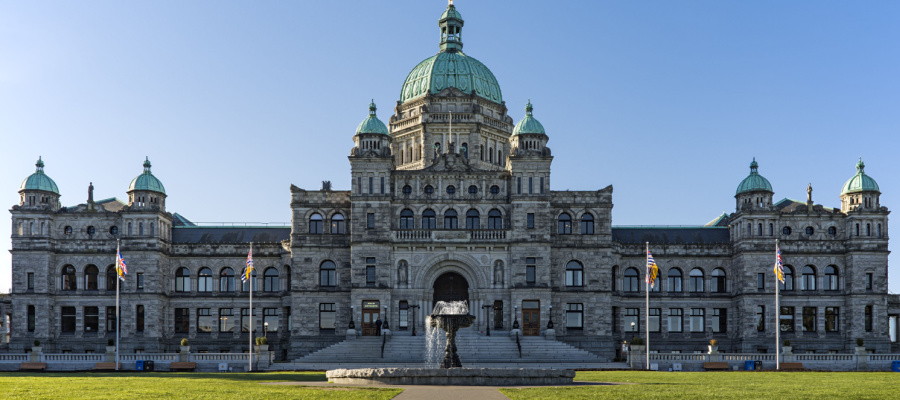Budget Update investments a positive first step for British Columbians
The BC Budget Update injects much-needed investment in a number of important policy areas that will quickly start to make a positive difference in the lives of families and communities around the province.
Some of the highlights:
MSP fee cut
Medical Services Plan (MSP) fees will be cut by 50% in January 2018 for everyone, not just for those with family income below $120,000 as the previous government had proposed. As we flagged in February, the previous government’s proposal was administratively difficult to implement and added the burden that individuals would have to apply to get the lower rates and possibly have to share their family income with their employer if the employer covers their MSP. This raised privacy concerns as well as bureaucratic issues. It doesn’t seem prudent to add an additional level of bureaucracy for a tax that’s slated for elimination within four years so it makes sense to do what the new budget proposes and cut MSP fees by 50% across the board. This budget upholds the enhancement to premium assistance for families announced in the February budget, which will further help modest-income families.
Poverty reduction
BC will finally have a poverty reduction strategy, something we have long advocated for as founding members of the BC Poverty Reduction Coalition. This is a much-needed development as BC had the highest poverty rate of all provinces in 2015 (the last year for which data is available). It will take months for a comprehensive poverty reduction plan to be fully developed and a basic income pilot program to be designed, implemented and evaluated, but this budget makes a number of immediate investments in key areas to get started.
Welfare rates will go up by $100 per month as of October 2017 as the new government announced earlier in the summer. This is a good start and breaks a decade-long freeze in rates. In addition, earnings exemptions will increase for welfare and disability assistance recipients by $200 per month. This is a positive step for those who are able to work. However, we know from Ministry data that only a small minority of recipients claim any earnings exemption and an even smaller number is maxing out their allowable exemptions so this measure will not affect many people. What the majority of welfare recipients need to see in the government’s February budget are further increases to welfare rates so they will meet the actual costs of living in this province. With the October increase, a single person on welfare will receive $710 per month or $8,500 per year—still thousands of dollars below the poverty line.
Newly announced investments in affordable rental housing, supportive housing for those who are homeless, in mental health and addiction supports and adult basic education will also greatly contribute to reducing poverty across the province.
The BC budget remains balanced but not by turning a blind eye to the pressing challenges facing our province.
Housing and homelessness
The government has promised a comprehensive housing strategy that will begin taking shape this fall, including a renters’ rebate and a reiterated commitment to build (or partner to build) 114,000 new rental, non-profit, co-op and owner-purchase housing units over a decade. Today’s budget update puts a down-payment on this plan, including a commitment to invest $208 million over four years to build 1,700 units of affordable rental housing. Particularly encouraging is $291 million in capital funding specifically earmarked to build 2,000 modular units to house people experiencing homelessness. An additional $172 million over three years is committed to provide “24/7 staffing and support services” to those units.
This nearly $500 million and 3,700 units of housing on the capital side is an important step and are welcome. It should be acknowledged, however, that this is modest given the scale of the housing crisis and compared to the government’s commitment to 114,000 units over ten years. We look forward to the development of the comprehensive housing strategy in the months ahead given that so many British Columbians struggle to secure affordable housing.
The budget also includes $7 million in additional funding for the Residential Tenancy Branch—a 27% increase targeted at reducing wait times for disputes and establishing a new compliance unit. The renters’ rebate is not shown in the budget update, but the Minister of Finance signalled that it will be forthcoming in some form in the months ahead. Taking time to get this policy design right is prudent and it would be worth looking at this rebate together with how the homeowners’ grant could be reformed to be fairer, an issue we’ve previously raised.
Fentanyl crisis and health care
The biggest commitment on health comes in the form of $322 million over three years to fight the fentanyl emergency. This includes $25 million to establish the new Ministry of Mental Health and Addictions, which will provide strategic oversight and direction to addressing the crisis (and the broader mental health and addictions file). Front-line services will continue to be provided by the Ministry of Health, which will increase funding to expand supervised consumption sites, improve access to on-demand addiction treatment and target the most vulnerable communities for help, including Indigenous peoples.
Overall, operating funding for the Ministry of Health is increased to 4% annually from a previous 3.6%, and MSP premiums are being cut in half. We don’t see in the budget update details on moving towards team-based primary care, increasing access to doctors and enhancing seniors’ care. Each of these items was discussed in either the September 8 throne speech or in the NDP-Green Party accord so it is likely that plans will be developed ahead of the full budget in February.
Education
As expected in light of last year’s Supreme Court of Canada ruling, the budget update includes significant new funding for K-12 education—vital after years of chronic underfunding. Funds to restore class size and composition provisions illegally stripped from teachers’ contracts is the single largest education item at $521 million (cumulatively over the next three years). Funding to account for both enrolment growth and previously negotiated wage increases in the K-12 system is also included along with $50 million in capital funding for much-needed new school space as class sizes decrease (part of a broader $2 billion three-year capital plan for K-12).
On the post-secondary side, the budget adds funding for the recently announced elimination of tuition fees for Adult Basic Education and English language learning programs, tuition waivers for children in government care as well as a substantial $2.6 billion capital plan. We’ll have to wait until the February budget, however, to see if there is additional operating funding for colleges and universities and supports for post-secondary students facing high tuition fees and large debts, which were acknowledged in the throne speech.
Tax fairness
This budget takes a number of important steps to improve tax fairness in BC. First, it introduces a new tax bracket for high-income individuals as outlined in the NDP platform. Starting in January 2018, individual taxable income over $150,000 will be taxed at 16.8% from the current 14.7%. This high-income tax bracket means the richest 2% of British Columbians will contribute a little more toward important programs and services and it is expected to raise nearly a quarter billion dollars per year. Second, corporate income taxes will go up one percentage point to 12% as of January 2018. This will raise about $306 million a year for public investments without putting undue pressure on the business sector. With this increase, BC will have the third-lowest corporate tax rate in the country, after Saskatchewan, Ontario (both at 11.5%) and Quebec (11.8%).
The provincial sales tax (PST) on electricity will be phased out as the previous government promised in its February budget.
In addition, a number of boutique personal income tax credits will also be phased out, including the children’s fitness, children’s fitness equipment and children’s arts tax credit (the federal government is similarly eliminating the equivalent federal tax credits). This is a good idea because research has found that these tax credits are not effective in increasing participation in arts or sports among lower- and modest-income families, and instead simply offer a tax cut for higher-income families who already enrol their children in these type of programs. This money will be much better used to support programming in schools. The BC Back-to-School Tax Credit, introduced by the previous government in February in a pre-election move to get the support of parents, is eliminated in the 2017 tax year. The credit offered up to $12.65 per child, hardly making a dent in family budgets.
There are a number of areas where we’ll need to wait until February, but that’s to be expected given that the new government has only been in power for two months.
Small business tax cut
The small business tax rate will go down to 2% from 2.5% as outlined in the previous government’s February budget at a cost of about $80 million. After the cut, BC’s small business tax rate will be second lowest in the country on par with Alberta and Saskatchewan. Lowering the small business corporate tax rate isn’t necessarily the best public policy as we argued in the spring. However, this should make it easier for small businesses to pay higher wages to their employees as the province moves to a $15 minimum wage, whose implementation will be determined by a new Fair Wage Commission. For reference, Ontario—which is ambitiously moving to a $15 minimum wage by January 2019—levies a small business tax rate of 4.5%.
Climate change
As laid out in the NDP-Green Party agreement, the budget confirms we will see a $5/tonne increase in the carbon tax in April 2018 with equal annual increases until 2021. This will be complemented by a rebate cheque targeted at low and middle-wage earners, increasing proportionately with the carbon tax increases. The maximum annual rebate will increase this year to $135 per adult and $40 per child. The Minister of Finance has indicated that the carbon tax will shift away from revenue-neutrality with additional funding committed to climate action initiatives, including the “energy retrofits and public infrastructure” mentioned in throne speech.
We can see the growing costs of climate change reflected in the enormous damage to families and communities being wrought by BC wildfires, and in the $506 million wildfire fighting costs projected in the budget update. That the new government came out of the gate by accelerating climate action is an encouraging change in direction. Having said that, the enormous scale and urgency of the climate crisis—and the stalled progress we’ve had in BC in recent years—mean much more will need to be done going forward.
Child care
This is one of the areas where the government appears to be moving more slowly than we might have expected. Despite making $10-a-day child care a key plank of their election platform, the new government is slow to provide details on how it plans to address the massive child care affordability crisis that parents are facing. The budget update announces $20 million in 2017/18 to build 4,000 new spaces. This is a first step but there is no guarantee the new spaces will be affordable or offer high-quality services. A lot more needs to be done. We look forward to the consultations that will take place over the coming months and the development of an integrated system of universal, affordable, quality child care system in the province, ideally based on the widely-endorsed $10-a-Day Child Care Plan.
**
When all is said and done, the budget includes around $700 million in new program investments in addition to nearly $700 million in higher spending due to fire management and emergency programs in 2017/18. Tax changes (including the cut to MSP fees), will net an additional $50 million of provincial revenues in the year. The BC budget remains balanced but not by turning a blind eye to the pressing challenges facing our province. Debt remains affordable despite the boost in capital spending in health care, education and transportation, and the one-time impact of reclassifying the Transportation Investment Corporation, which the Auditor General has said was inappropriately classified in the first place.
There are a number of areas where we’ll need to wait until February, but that’s to be expected given that the new government has only been in power for two months (for background, check out our post from last week, in which we and our colleague Marc Lee discussed our expectations for today’s budget). What’s perhaps most encouraging is the shift in the direction we’ve seen in the past two months—away from years of austerity and deference to the private marketplace—and towards badly needed social investments.
Topics: Economy, Features, Provincial budget & finance






